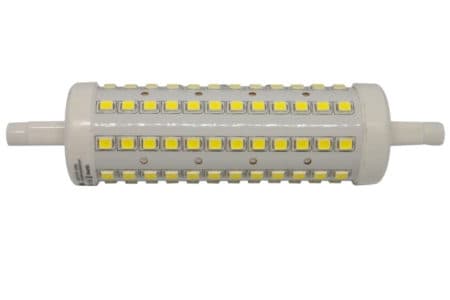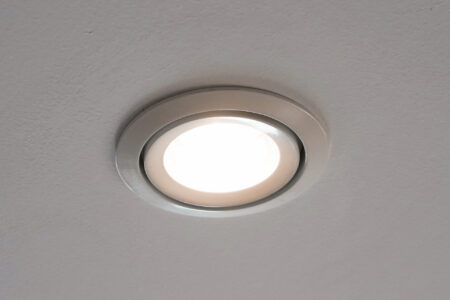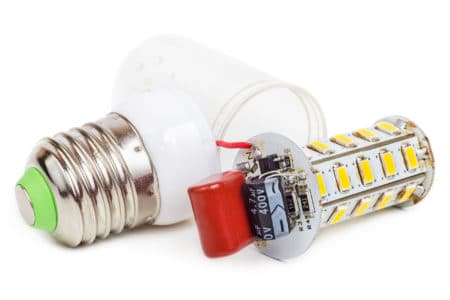A timer switch is convenient to automatically turn on your lights at certain times. It doesn’t matter whether you want to control your outdoor lighting, decorative lights or aquarium lighting. But when using LED lamps on a timer, some problems may occur. Here you’ll find out what to pay attention to when choosing a timer switch.
Where are time switches used?
Timers are a special type of light switch. They are practical wherever you want to switch on and off your lighting at fixed times. These are some typical applications for timer switches:
- Exterior lighting of yard or driveway
- Interior lighting for burglary protection
- Aquarium or terrarium lighting
- Shop window lighting
The use of a timer switch highly increases your comfort. This means that the lamps no longer have to be switched on and off manually every time. On the other hand, a timer also helps to save electricity. For example, the light of a shop window only needs to be switched on during opening hours. These times can be programmed into a timer.
What timer switches are available?
Basically, there are two types: analog, mechanical timers and digital timers.
Mechanical timers
The mechanical clocks with switching contacts have been around for many decades. These are mostly so-called daytime clocks, in which a cycle is repeated every 24 hours. The clocks usually have a rotating disk with circularly arranged tabs. Depending on the position or coding of the tabs, the switching times can usually be set in a 15-minute grid.
The main advantage of mechanical timers is their very simple operation.
Due to the daily clock, mechanical timer switches are only suitable for very simple switching tasks that are repeated exactly every day. Also the mechanical tabs for the selection of the switching times are partially susceptible to interference. Another disadvantage is the coarse time grid.
Digital timers
The digital timers are the modern successors of the mechanical clocks. The digital timers are mostly weekly time switches. Here individual switching times can be set for each day of the week. The times are programmed via a display and some function keys.
Also available are annual timer switches. Here separate times can be programmed for each day in the year. Many digital timers also have a random mode. This allows the lighting to be switched on randomly in a specified time window to simulate a presence.
Digital timers are much more flexible due to the weekly clock. For example, different switching times can be set on weekdays than on weekends. All times can be set to the minute.
Depending on the settings menu, time programming can be somewhat more complex than with a simple mechanical time switch.
Timer variants
There are different variants available of the two types of timer switches described above:
- Intermediate plug for retrofitting
- Flush mounting for all common switch programs
- Top hat rail mounting for switch cabinet installation
Intermediate plugs for retrofitting
The best known are timers in the form of an adapter plug. These are well suited for retrofitting and are simply plugged in between the socket and the mains plug of the luminaire. There are no open contacts here, so no installation work by an electrician is required.
Flush mounted timer
Timers for flush mounting can be installed in existing flush-mounted boxes. These are available for all common switch programs and can also be installed instead of a previously installed light switch.
Timer for top-hat rail
The third common variant are timers for top-hat rail mounting. These are ideal for fixed installation in the control cabinet or fuse box. Timers for the top-hat rail are often the first choice when the design of the electrical installation already determines which lighting and circuits are to be time-controlled.
What problems can occur?
Most timer switches have a relay with a mechanical switch contact installed as the internal switch. This also applies to most digital models, because only the time control works digitally here. When the light is switched on, the relay is energized by the digital control, so the switch contact closes and establishes the current flow to the connected light.
The process itself is unspectacular and works with many connected lamps without any problems. However, the following problems can occur when using LED lamps.
Lamp still lights up when timer is switched off
It may happen that a connected LED lamp continues to glow darkly even though the timer is in off mode. The electrical details of this problem are explained in detail in the linked article.
Possibly the neutral conductor is switched by the 1-pole switching contact instead of the live phase. By turning the power plug, the phase and neutral are swapped and the problem could be solved.
Inductive or capacitive coupling in the power cable to the LED luminaire is a frequent cause, especially with permanently installed timer switches. These can be eliminated with an LED capacitor.
Relay contact wears out
Especially when several LED lamps are connected to the timer, high inrush currents can be generated by the switching power supplies in the LED lamps when the timer is switched on. As a result, the switching contact can wear out or even stick in the worst case. The connected LED therefore remains dark or always on, although the timer switches perfectly.
An LED inrush current limiter can help to reduce the inrush current. These can be easily retrofitted and protect the relay contacts.
LED lamp suitable for timer?
In principle, most LED lamps are suitable for operation on a timer switch. But if the lamp has an electronic switch, you should first check whether it is eligible. For example, many table lamps have a touch sensor or sensor switch. Here it depends whether the lamp controller remembers the last switching state.
If you have a mobile light with an electronic switch, you can test it very easily. Pull the plug out of the socket when it is switched on and wait a moment. Then put the plug back in and see if the lamp lights up again. In this case, the last switching state is retained and the lamp also works on a timer.
Conclusion
A timer switch for outdoor lights, aquariums or shop window lights is very convenient and also saves energy. In many cases, LED lamps work perfectly on a timer. With the above tips, you can choose the right timer switch for your application. The list of the most common stumbling blocks and possible solutions will help you in case of any problems.






